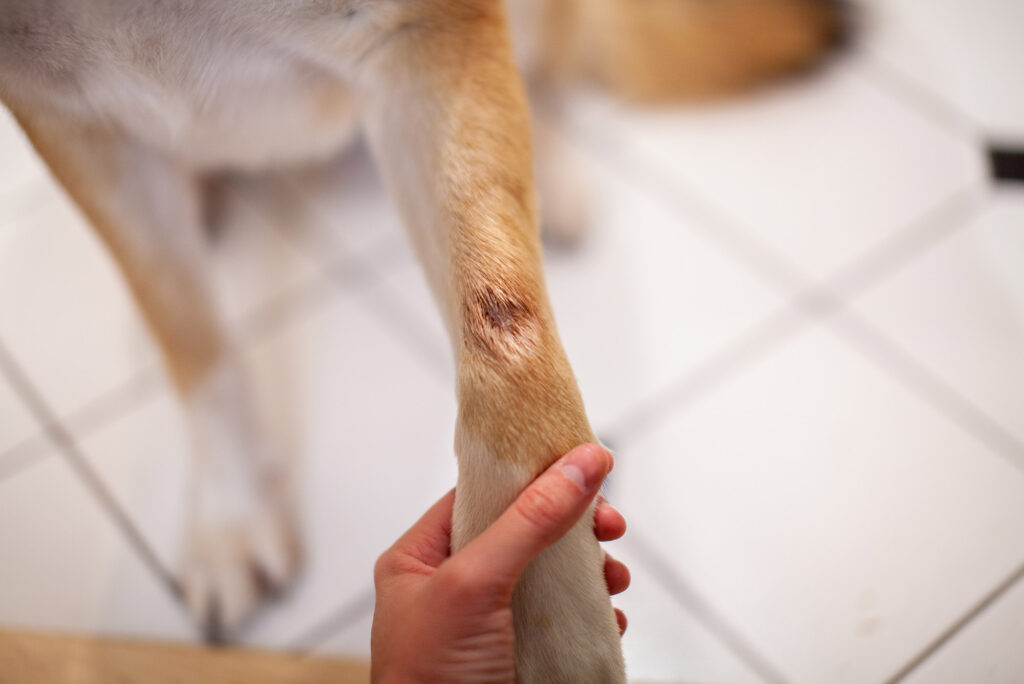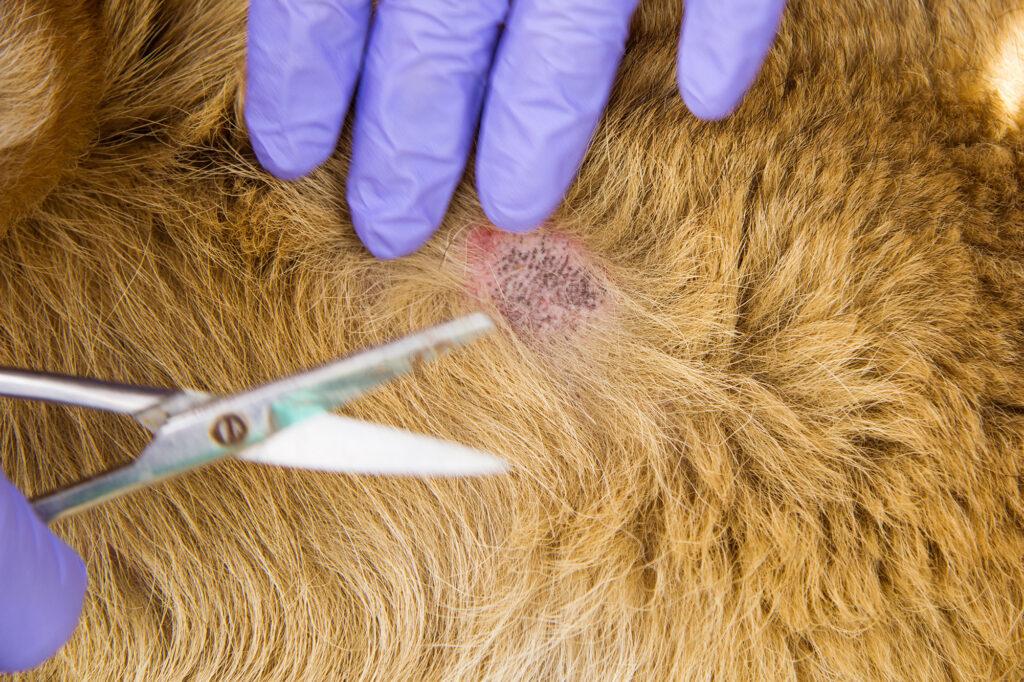Dog Hot Spots: How to Spot and Treat
Dog hot spots can occur year-round, but as temperatures increase so does the risk of dogs developing these unsightly sores. In as little as 10 minutes, your dog can lick its way to a trip to the vet.
Fortunately, hot spots on dogs tend to be less painful than they look, but the sooner they’re dealt with, the better.
In this post we’ll talk about what hot spots are, what causes them, and what measures you can take as a pet parent to prevent them.
What ARE dog hot spotS?
A dog hot spot is an itchy, red lesion on the skin’s surface that takes place when normal skin bacteria override the skin’s defence system. Regardless of its source, dogs may choose to relieve an itch with excessive chewing, scratching, or licking to the point that the area becomes a hot spot.

Dog hot spots move through phases:
- Phase 1: The skin in the affected area is red and visibly inflamed, often with oozing pus and moisture. All of these are indicators of a bacterial infection. You’ll likely notice your dog repeatedly itching or licking the area, too.
- Phase 2: Once the pus from the damaged skin begins to dry out and infection sets in, a crust will form. As it does, fur will begin to stick together or fall out. Don’t be surprised if your dog flinches or whimpers if you attempt to touch the area; this is their way of communicating to you that they’re in pain.
- Phase 3: Left untreated, dog hot spots can rapidly increase in size and trigger more serious medical conditions. Moral of the story: don’t let your dog reach Phase 3!
Hot spots on dogs: Causes and culprits
We’ve already mentioned that hot spots frequently develop from excessive chewing, scratching, or licking at the site… but why?
Here’s where things get a bit tricky: the reasons for these behaviours are varied, but ultimately your dog is seeking pain relief (even if it’s only temporary). Anything that can irritate the skin is a viable culprit, from an excess of skin moisture to insect bites, allergies, thick or matted fur, scrapes, and so on.
Sometimes the location of a hot spot can point to the underlying issue or issues. For example, if your dog is favouring just under their ear (a common hot spot for hot spots), this may suggest a nerve irritation, dental issue, or ear infection.
Rather than take a best guess at the cause, we always recommend speaking with your vet. They’re your biggest ally and greatest help when it comes to treating pesky hot spots.
How to treat DOG HOT SPOTS
Hot spots come in all different shapes and sizes, and a common question is whether they are totally treatable at home.
The answer? It depends.
If caught early enough and if there isn’t reason to believe the hot spot is causing your dog pain, at-home treatments may do the trick. However, because the size and condition of a hot spot can quickly change, it may be safer and more effective to have a veterinarian step in.
Some things you can do at home to treat dog hot spots and begin the healing process:
- Because hair traps moisture, if you feel comfortable you can clear the area with grooming clippers. This allows the skin to breathe and can expedite recovery.
- Keep the affected area clean and dry. Along with common household items like a wet cloth, there are a number of medicated shampoos and topical sprays available. Be sure that whatever you choose is vet-approved and safe for pets.

Since a dog hot spot can be a source of tremendous physical discomfort, as a rule of thumb it’s best to book in to see your veterinarian. Sometimes (but not always) what looks to be a superficial injury is actually an indicator of a deeper skin infection, bite wound, or ulcer.
The treatment program your vet chooses will depend on factors like pain intensity, size, how long the hot spot has been around for, and whether this is a recurring issue.
In some cases, anesthesia or sedation may be required to safely shave the area and assess the situation.
Dog hot spot treatments may include one or more of:
- Antibiotics
- Anti-inflammatory drugs
- Glucocorticoids (steroids that reduce swelling, pain, and itchiness)
- Topical medications
- E-collars (to prevent further self-trauma)
Dog hot spot prevention
Hot spots can happen to all dogs, but they’re especially prevalent among breeds with thick and/or matted undercoats (think Saint Bernards, Golden Retrievers, or German Shepherds) because their dermal environment is primed for bacterial or other moisture-related issues.
The single best prevention tactic for pet parents is regular grooming. What “regular” looks like will depend on the type of dog you have, but keeping up with haircuts is a best practice for many reasons (keeping your dog cool in the summertime, for example).
Another preventative measure you can take is flea control. Fleas are practically synonymous with itching, so chat with your vet about safe flea treatments like topicals or shampoos.
Ultimately, the goal is to keep your dog happy, healthy, and itch-free all year long with products and information that support proactive, preventative wellness. Our vet-curated dog subscription boxes do just that.
Like what you read? Share it with a friend! Make sure to subscribe to Waggle (e)Mail, too, for even more ways to promote a healthy body, healthy mind, and healthy pet-parent bond.

